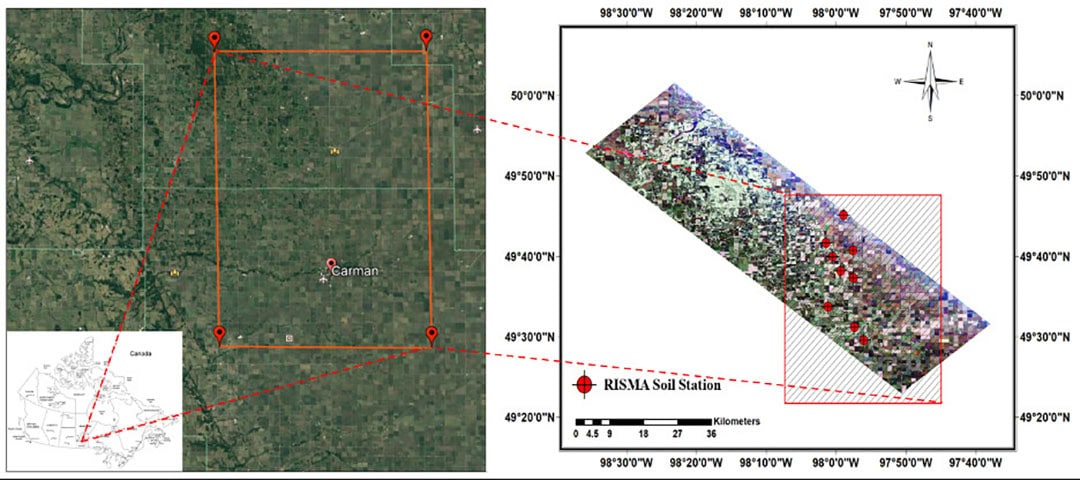NASA Harvest explores new methods for monitoring soil moisture

NASA Harvest has been exploring new methods for monitoring soil moisture using a combination of machine learning models and satellite-based radar waves.
Monitoring soil moisture can be done in many ways. According to NASA Harvest, in-person ground sampling provides the most accurate results. However, due to the highly heterogeneous spatial and temporal variability of moisture content across the ground, this method is often not feasible, state the researchers. “Remote measuring methods utilising earth observation (EO) satellites are a great alternative as they greatly reduce labor and resource constraints associated with ground-based methods,” NASA says.
Synthetic Aperture Radar
The researchers say one form of EO data, Synthetic Aperture Radar (SAR), is particularly preferred for its ability to see through cloud cover, increasing the number of ground observations. SAR satellites work by sending out radar pulses towards the surface of the earth and recording the amount of signal that bounces off of the surface is intercepted by the satellite’s sensor. This lets NASA Harvest build models to measure the water content in the soil as SAR signals are highly sensitive to soil dielectric constant.
“A number of studies have shown SAR’s usefulness in measuring soil moisture over bare soil, however data is less easily interpretable over cropland as crops can block the radar from fully reaching the ground and affect how it reflects back to the sensor,” NASA Harvest states.
NASA Harvest’s Dr. Mehdi Hosseini and Program Director Dr. Inbal Becker-Reshef recently co-authored a paper exploring new ways of accounting for crop complication in soil moisture measurement. The team looked at a specific SAR technique called polarimetric decomposition. The technique applied to dual-polarimetric data from European Space Agency’s Sentinel-1 mission, a free and open data program, and then the derived polarimetric parameters were used to train the soil moisture estimation models.
Text continues underneath image

More than 150 samples of soil moisture
Three popular machine learning models for comparison were used: Multi-Layer Perceptron Neural Network (MLP NN), Generalized Regression Neural Network (GRNN), and Support Vector Machine (SVM). They then organised more than 150 samples of soil moisture collected from 9 ground stations in Manitoba, Canada as ground-truth data to train their models. Finally they gathered coincident Sentinel-1 data.
According to the researchers, results found that both neural network models outperformed the SVM, with the GRNN having the most accurate measurements. “Further adding to the preferability of the GRNN is its simplicity. The SVM and MLP NN models require a number of parameters to be finetuned, while the GRNN has only one parameter that must be adjusted,” the authors said, noting that this simplicity combined with its high accuracy make the GRNN a good choice for future soil moisture monitoring applications.
Future studies needed
NASA Harvest states monitoring soil moisture accurately can vary based on ground conditions and so future studies are needed for different soil textures and crop growth stages. “Fortunately, given this method’s success with ground data, future research could more reliably utilise passive microwave soil moisture monitoring platforms in lieu of ground data collection – greatly increasing the types of landscapes and agricultural production available,” the authors said.
Join 17,000+ subscribers
Subscribe to our newsletter to stay updated about all the need-to-know content in the agricultural sector, two times a week.



